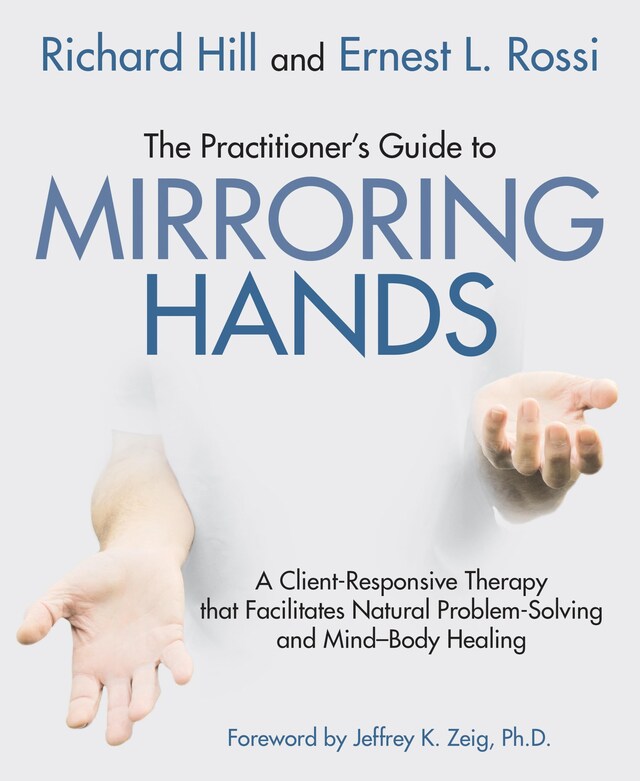
The Practitioner's Guide to Mirroring Hands
A client-responsive therapy that facilitates natural problem-solving and mind-body healing
Description of the book
Richard Hill and Ernest L. Rossi's The Practitioner's Guide to Mirroring Hands: A Client-Responsive Therapy that Facilitates Natural Problem-Solving and Mind Body Healing describes in detail how Mirroring Hands is conducted, and explores the framework of knowledge and understanding that surrounds and supports its therapeutic process. Foreword by Jeffrey K. Zeig, Ph.D. In this instructive and illuminating manual, Hill and Rossi show you how Mirroring Hands enables clients to unlock their problem-solving and mind body healing capacities to arrive at a resolution in a way that many other therapies might not. The authors offer expert guidance as to its client-responsive applications and differentiate seven variations of the technique in order to give the practitioner confidence and comfort in their ability to work within and around the possibilities presented while in session. Furthermore, Hill and Rossi punctuate their description of how Mirroring Hands is conducted with a range of illustrative casebook examples and stage-by-stage snapshots of the therapy in action: providing scripted language prompts and images of a client's hand movement that demonstrate the processes behind the technique as it takes the client from disruption into the therapeutic; and from there to integration, resolution, and a state of well-being. This book begins by tracing the emergence of the Mirroring Hands approach from its origins in Rossi's studies and experiences with Milton H. Erickson and by presenting a transcription of an insightful discussion between Rossi and Hill as they challenge some of the established ways in which we approach psychotherapy, health, and well-being. Building upon this exchange of ideas, the authors define and demystify the nature of complex, non-linear systems and skillfully unpack the three key elements of induction to therapeutic consciousness focused attention, curiosity, and nascent confidence in a section dedicated to preparing the client for therapy. Hill and Rossi supply guidance for the therapist through explanation of therapeutic dialogue's non-directive language principles, and through exploration of the four-stage cycle that facilitates the client's capacity to access their natural problem-solving and mind body healing. The advocate Mirroring Hands as not only a therapeutic technique, but also for all practitioners engaged in solution-focused therapy. Through its enquiry into the vital elements of client-cue observation, symptom-scaling, and rapport-building inherent in the therapist/client relationship, this book shares great wisdom and insight that will help the practitioner become more attuned to their clients' inner worlds and communication patterns. Hill and Rossi draw on a wealth of up-to-date neuroscientific research and academic theory to help bridge the gap between therapy's intended outcomes and its measured neurological effects, and, towards the book's close, also open the door to the study of quantum field theory to inspire the reader's curiosity in this fascinating topic. An ideal progression for those engaged in mindfulness and meditation, this book is the first book on the subject specially written for all mental health practitioners and is suitable for students of counseling, psychotherapy, psychology, and hypnotherapy, as well as anyone in professional practice.
 395 Pages
395 PagesFormat:
Language:
English
